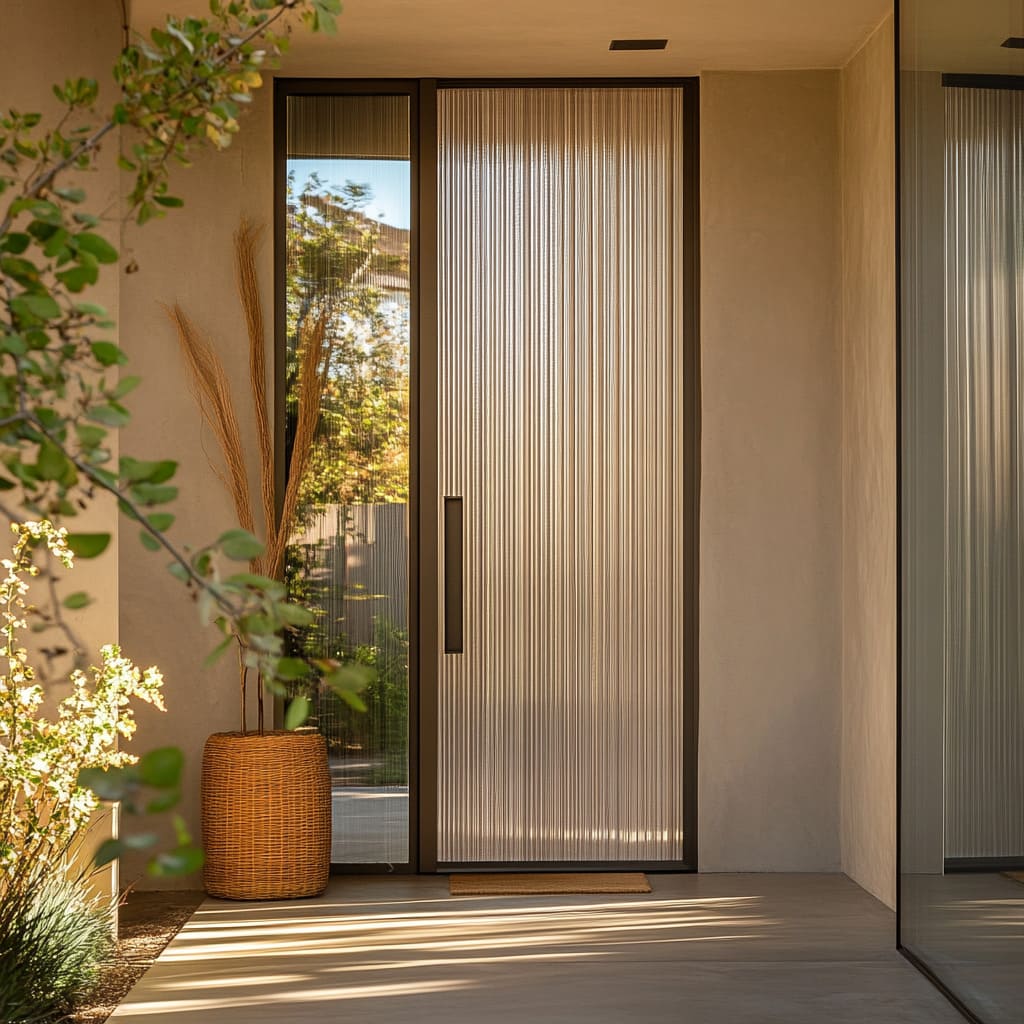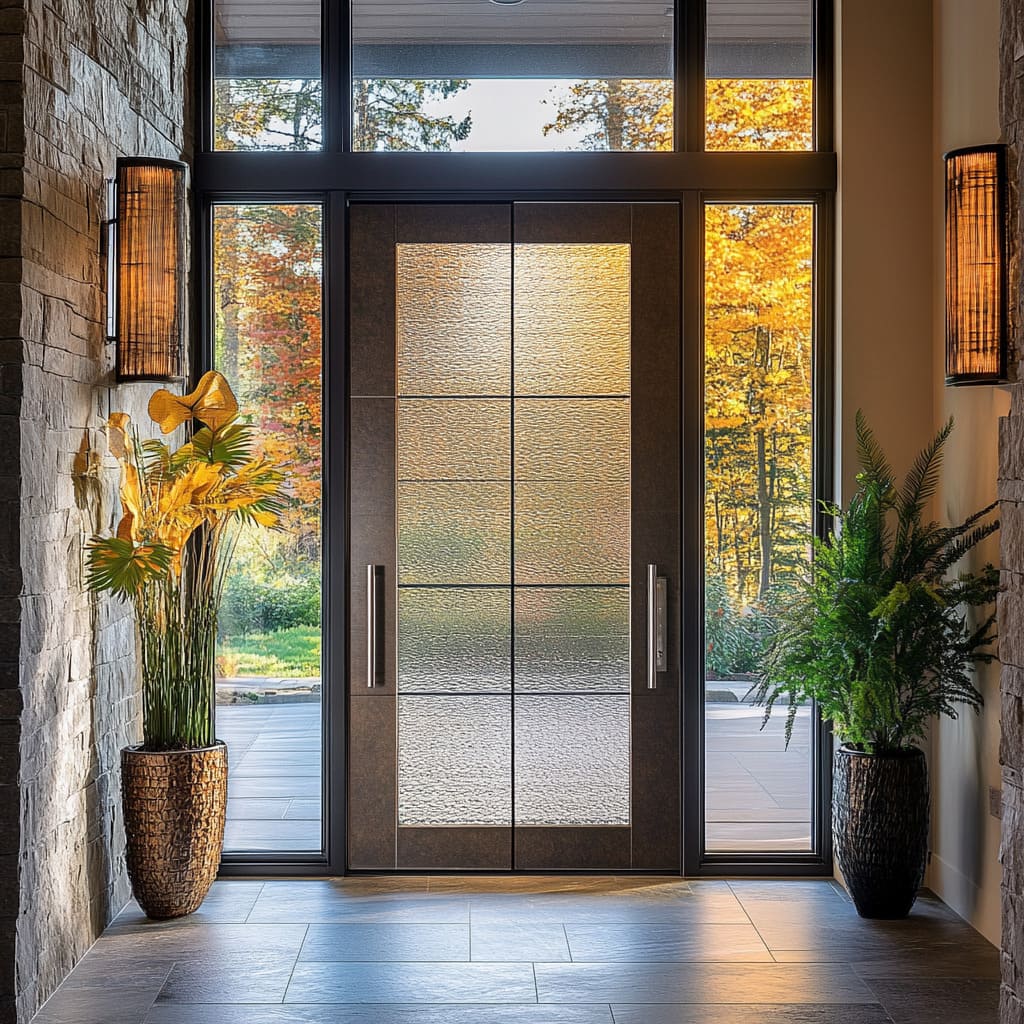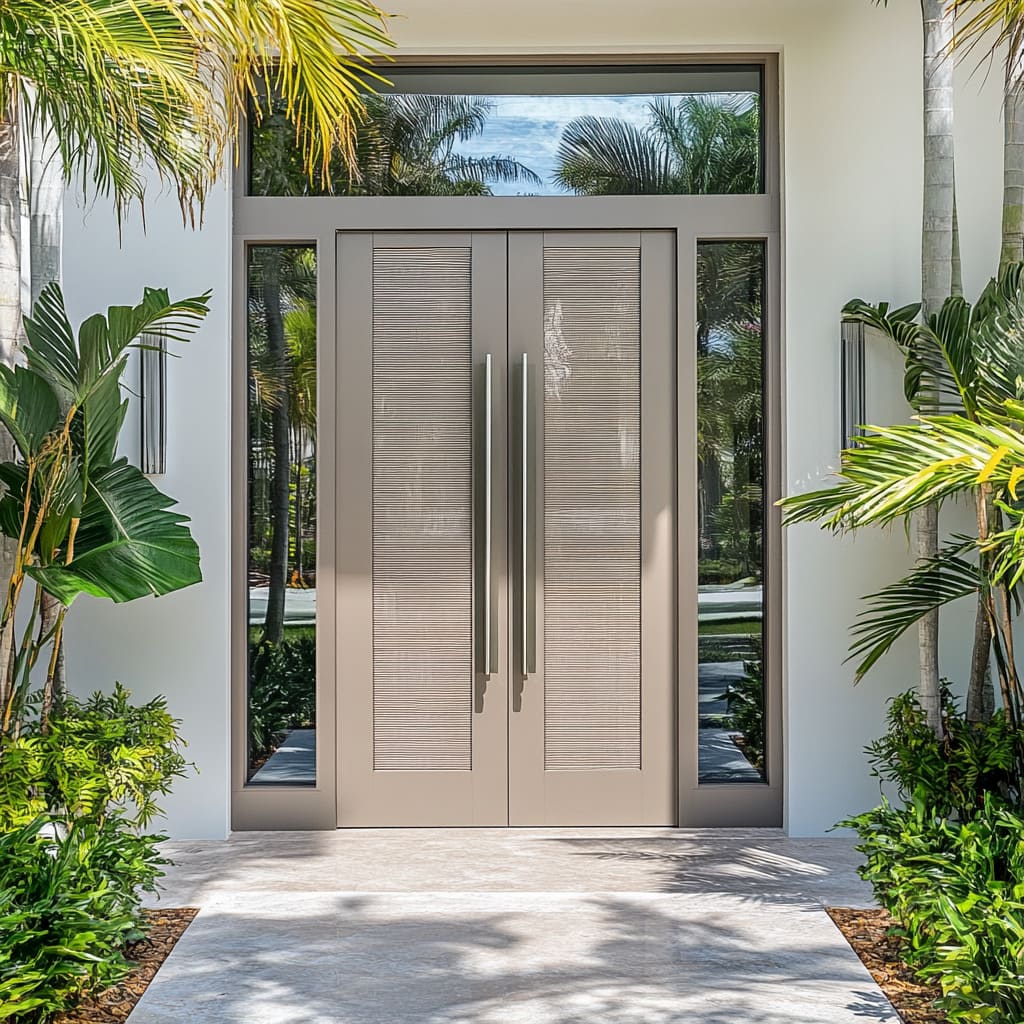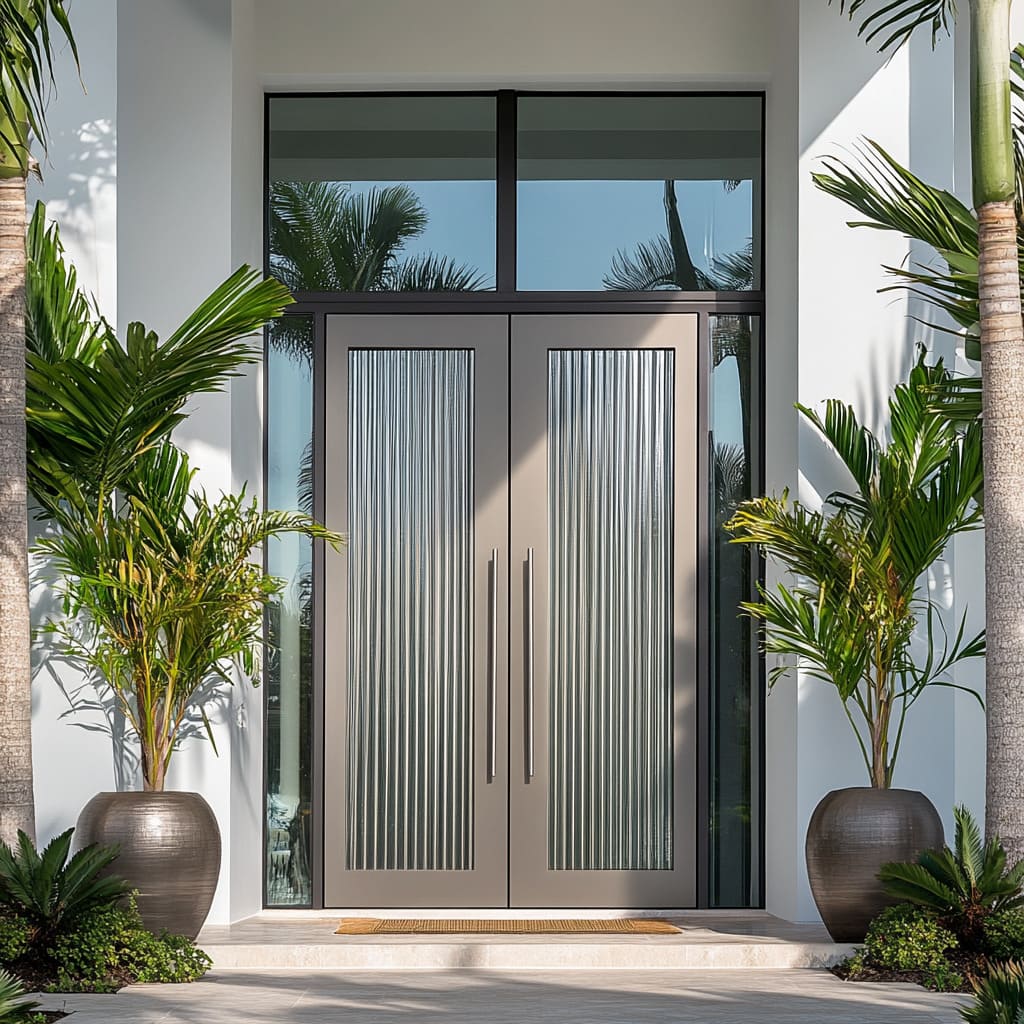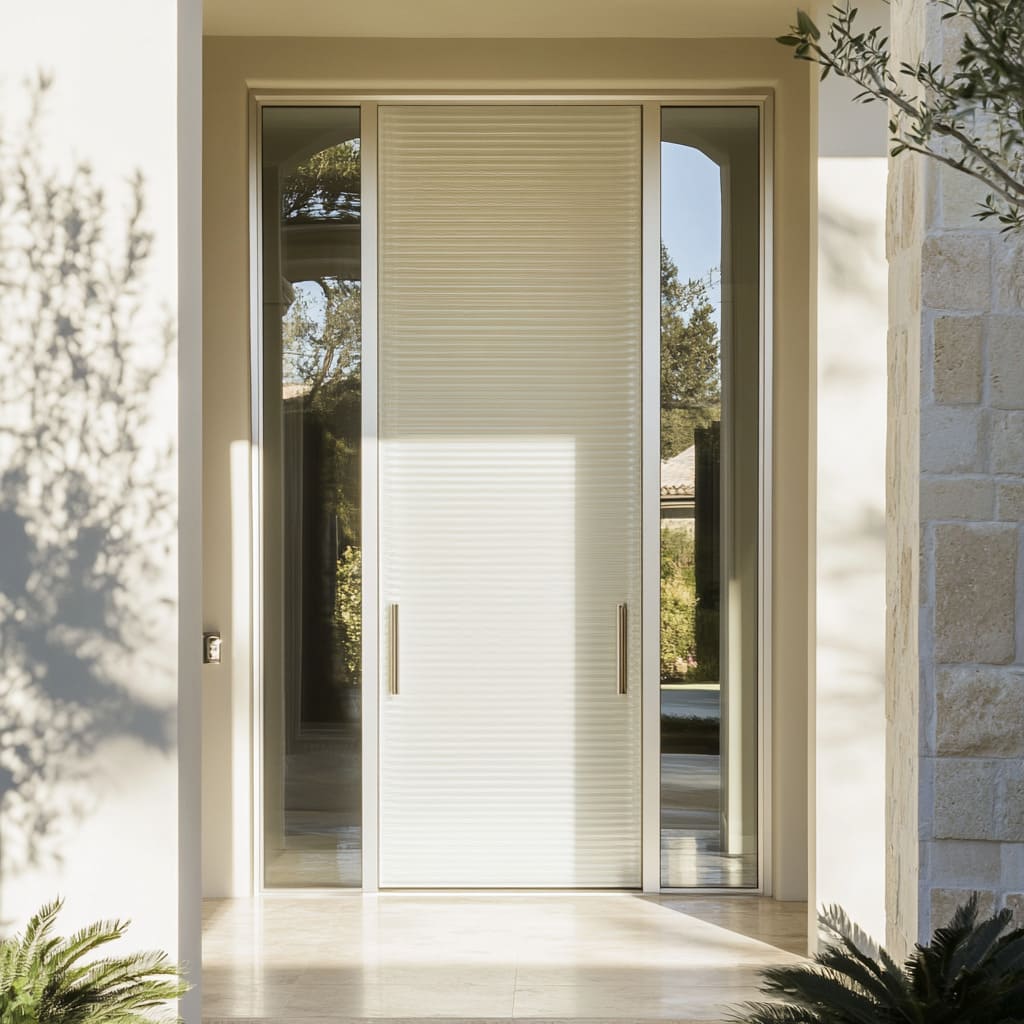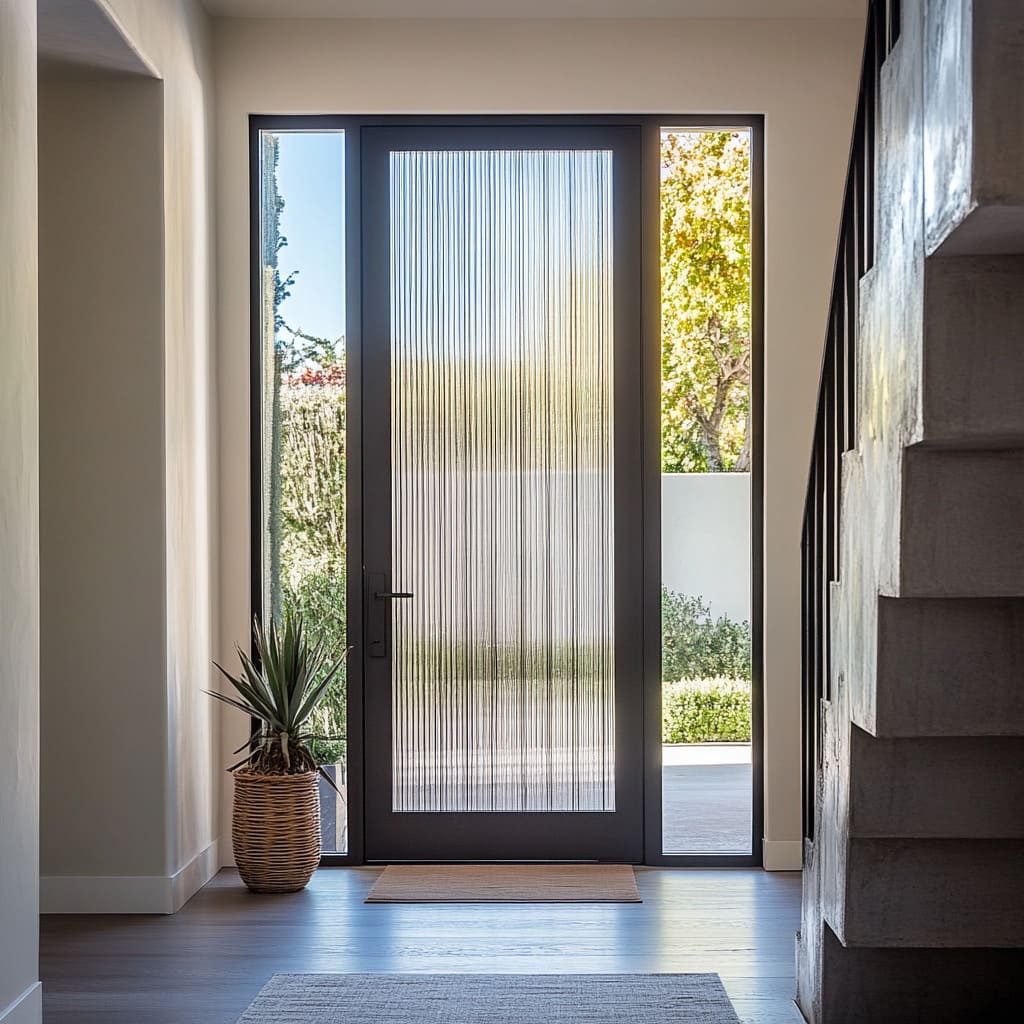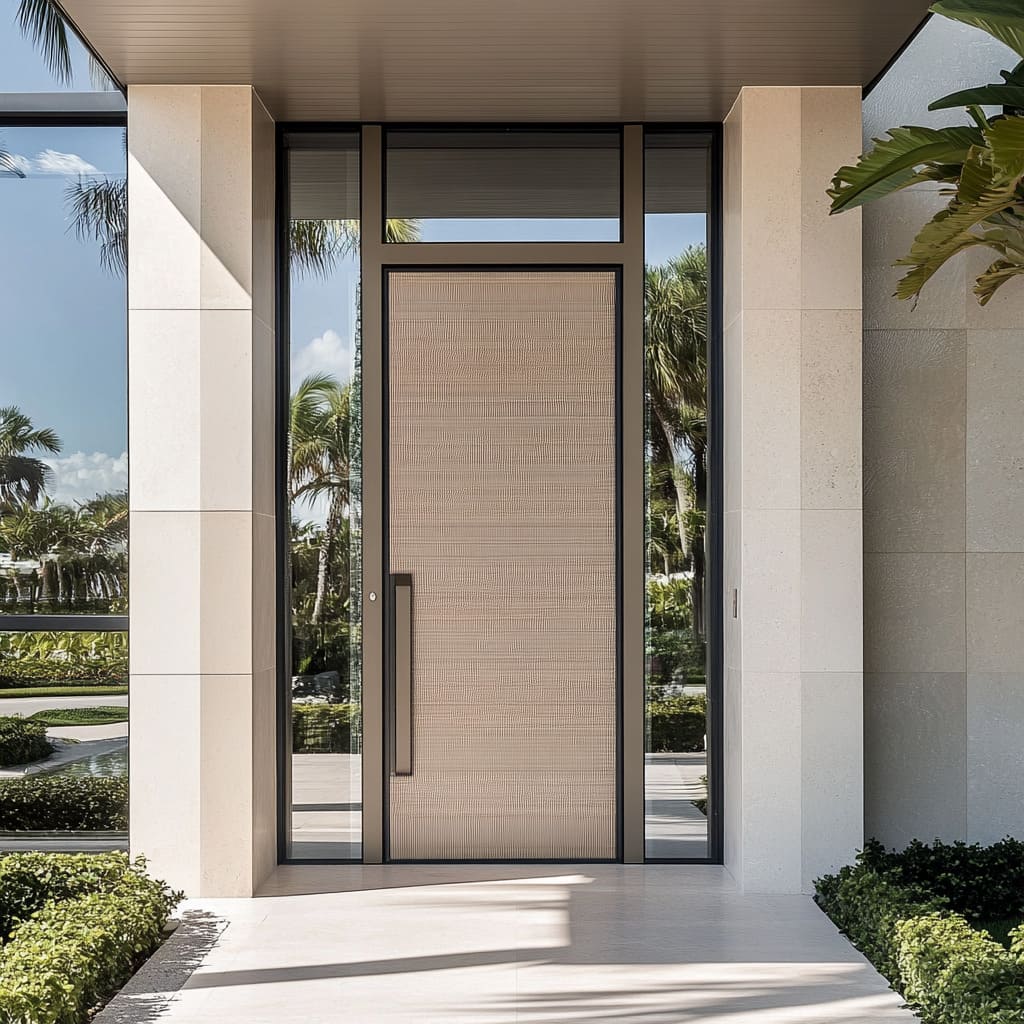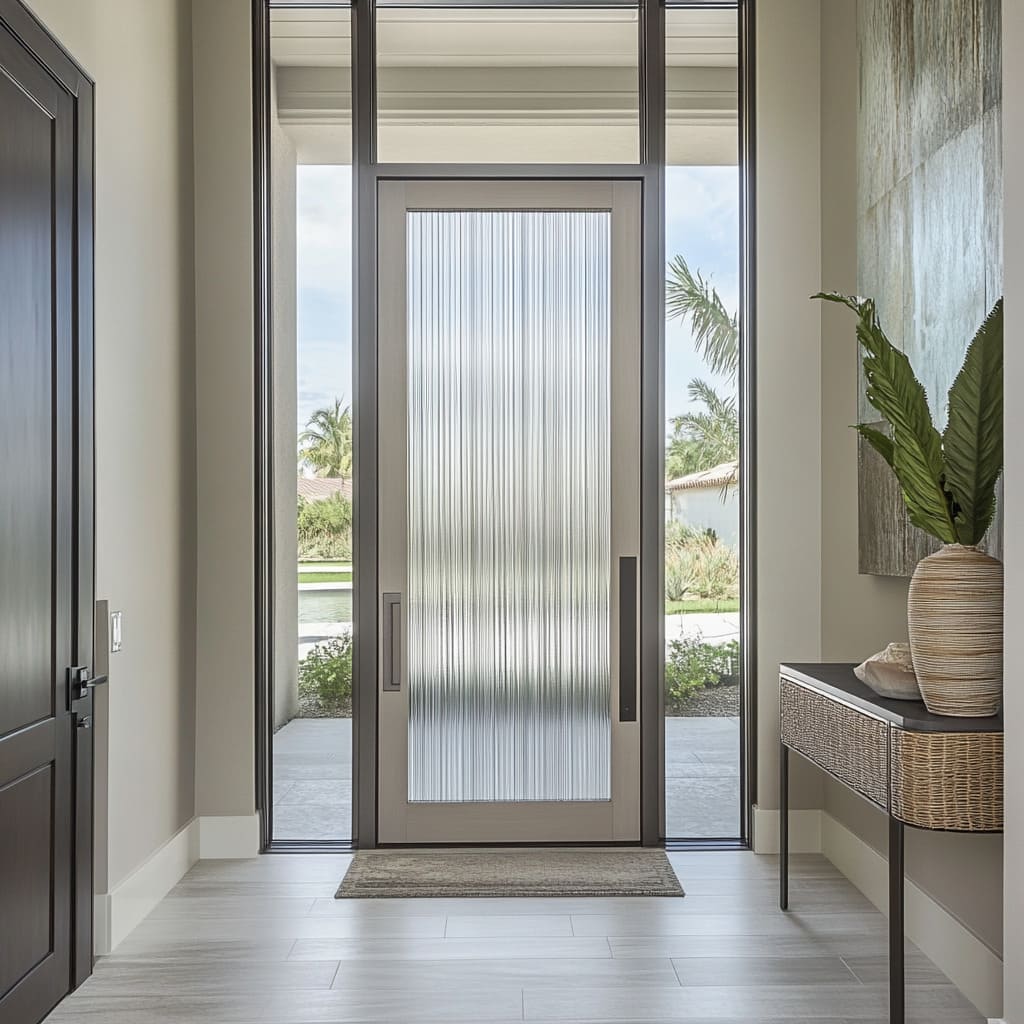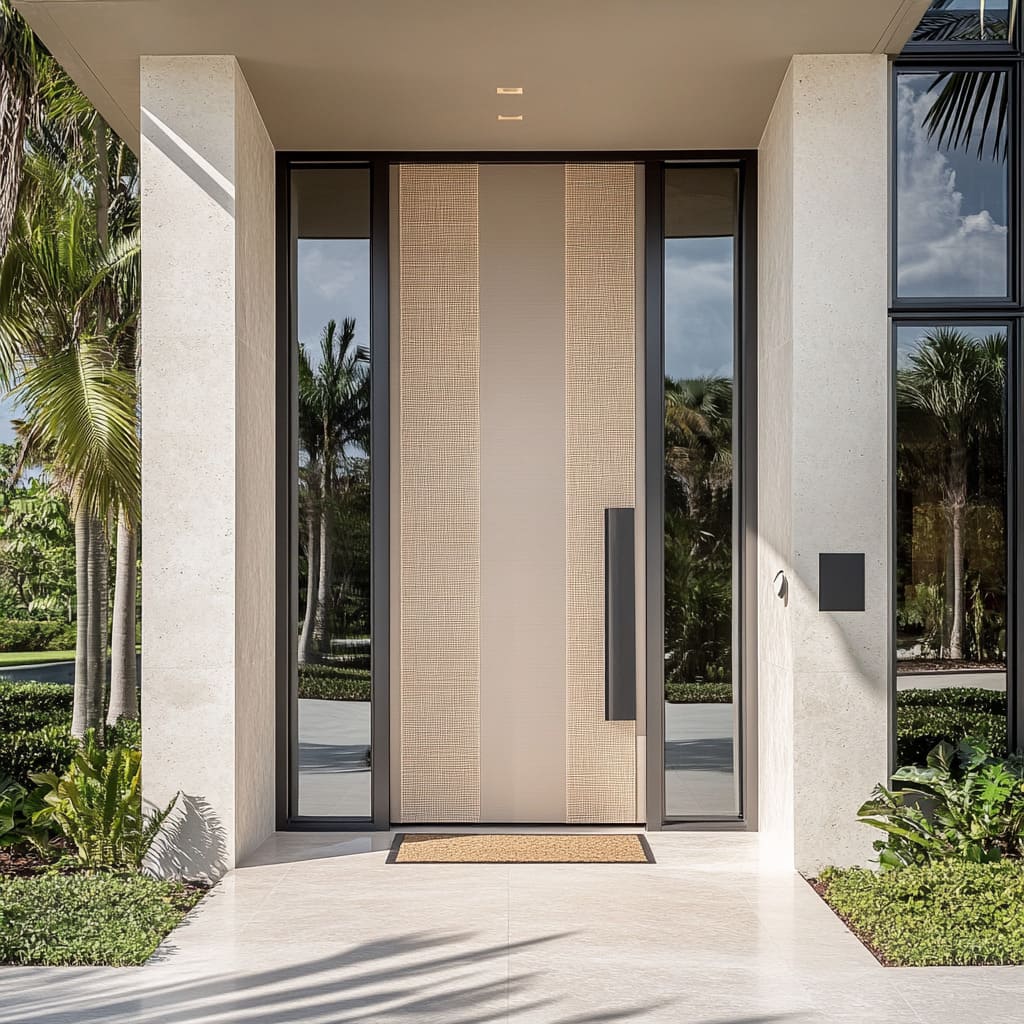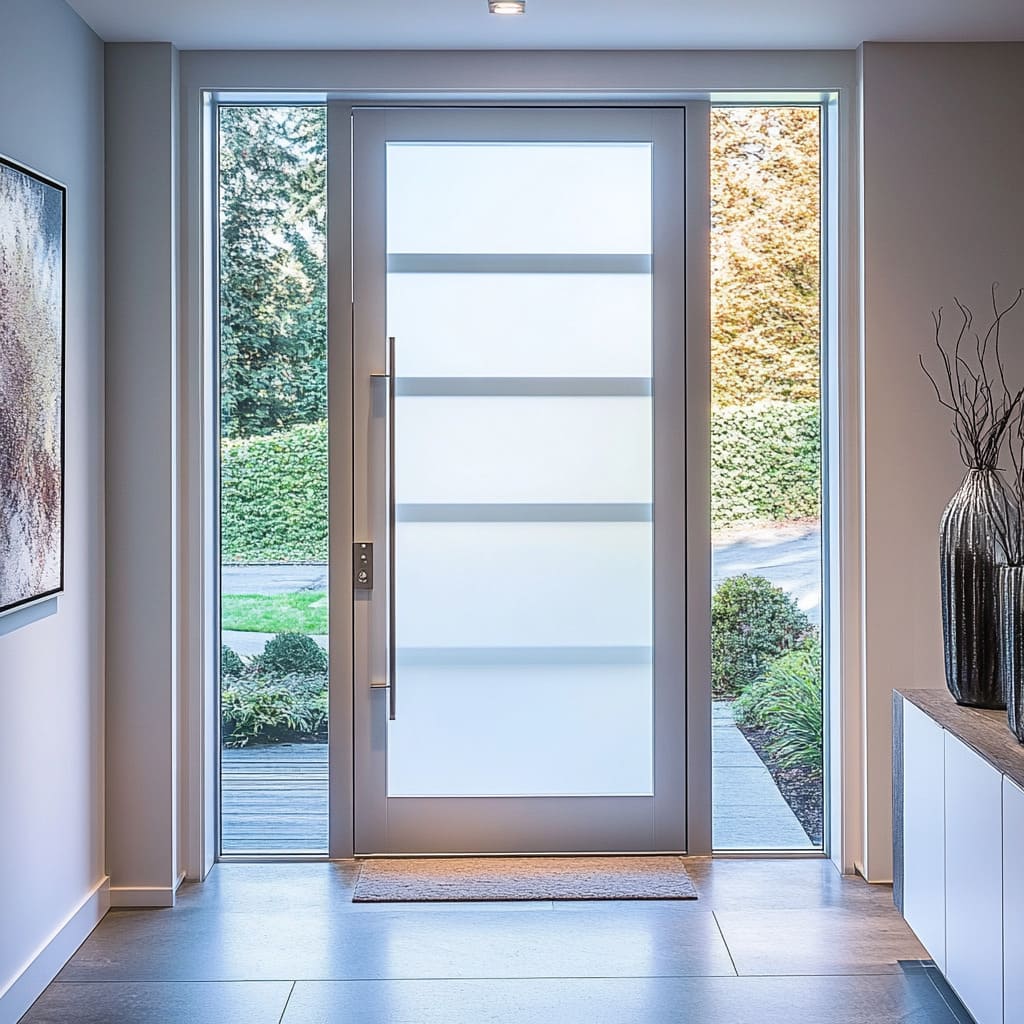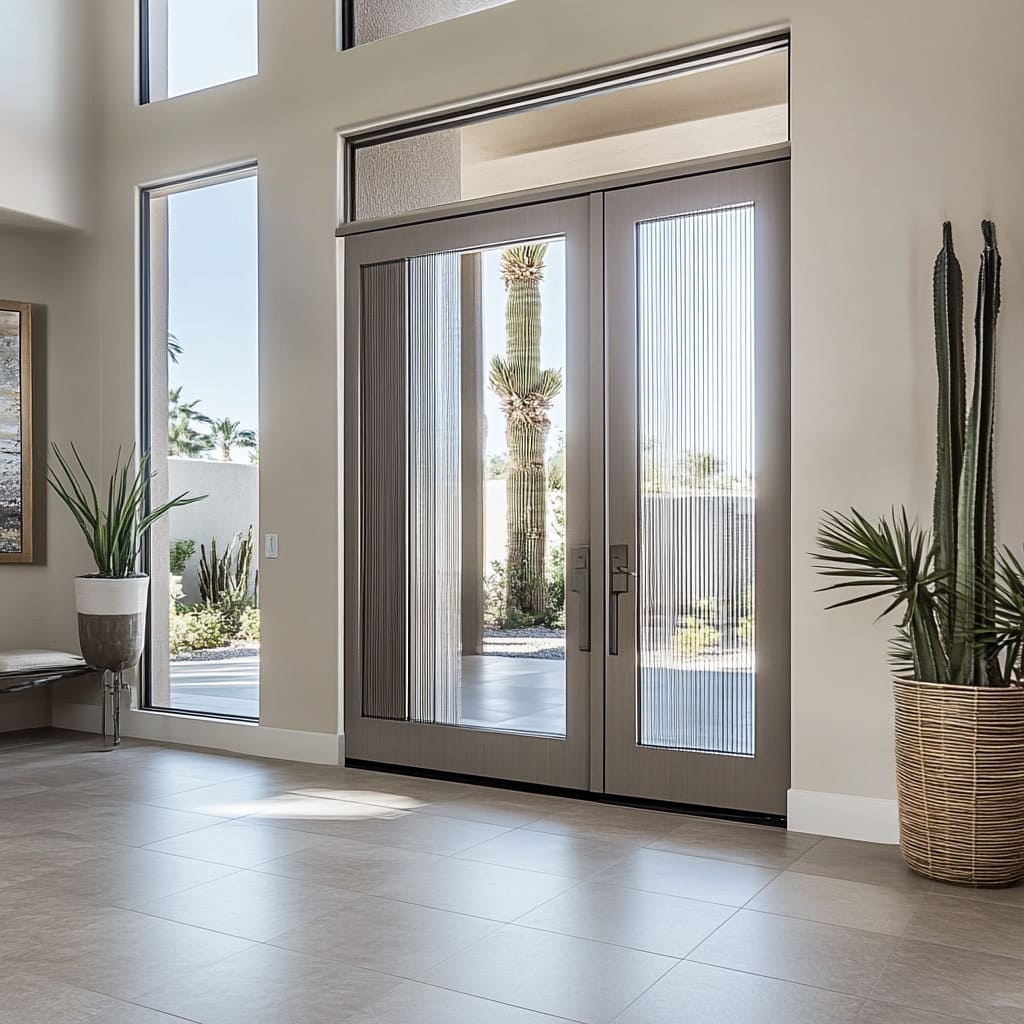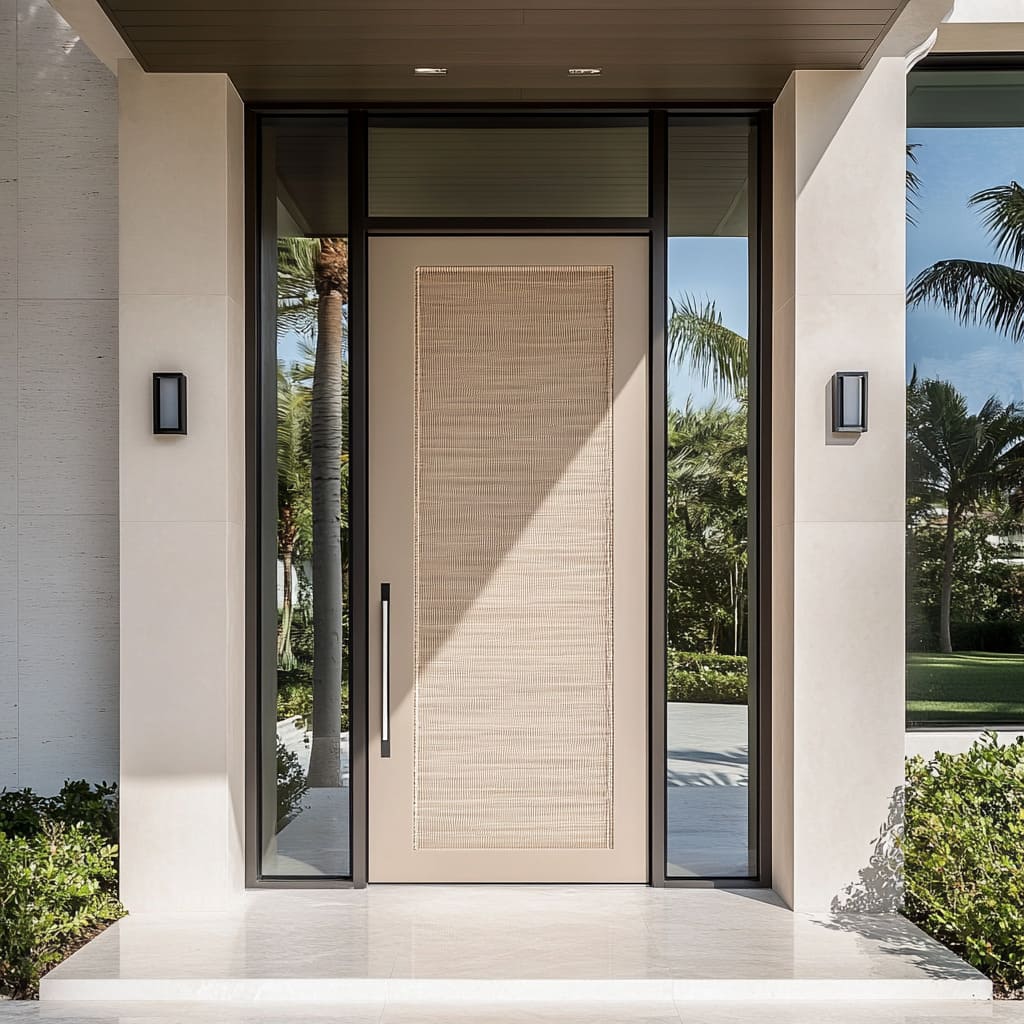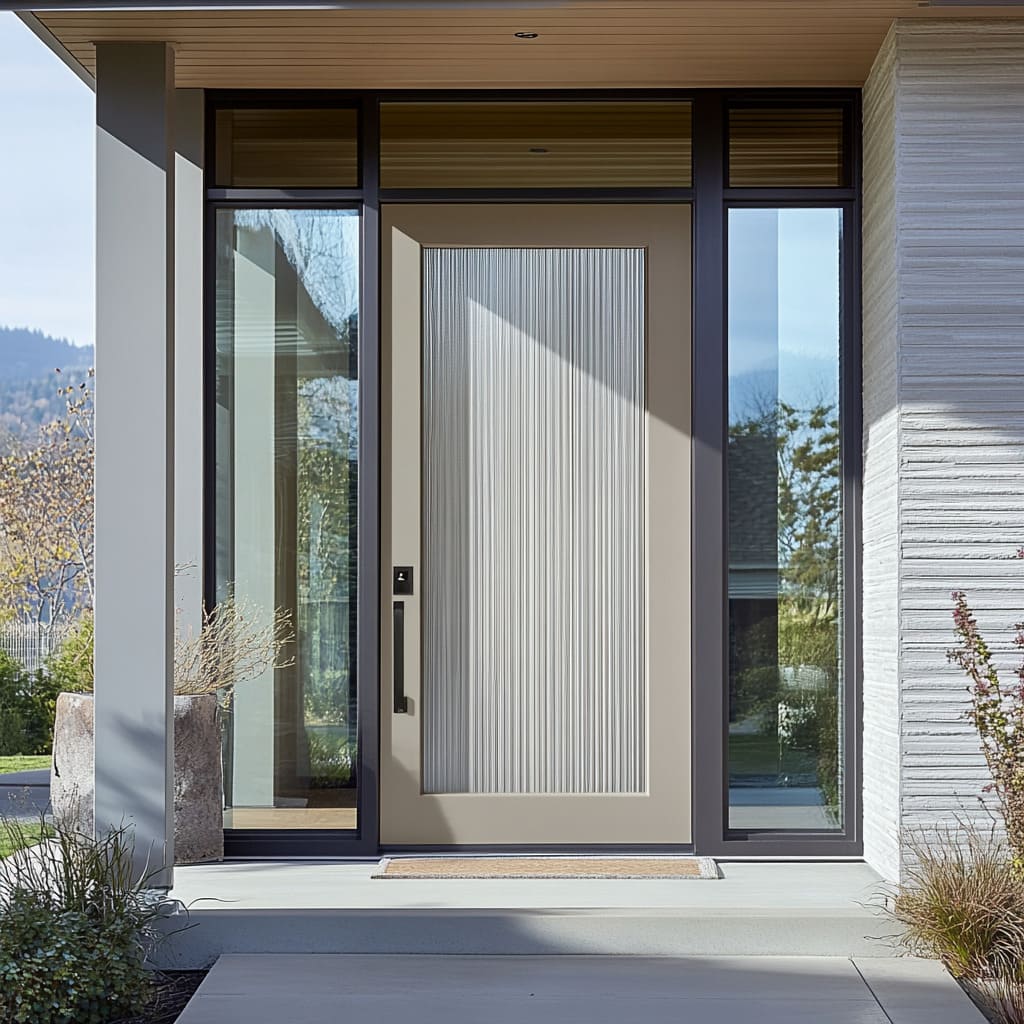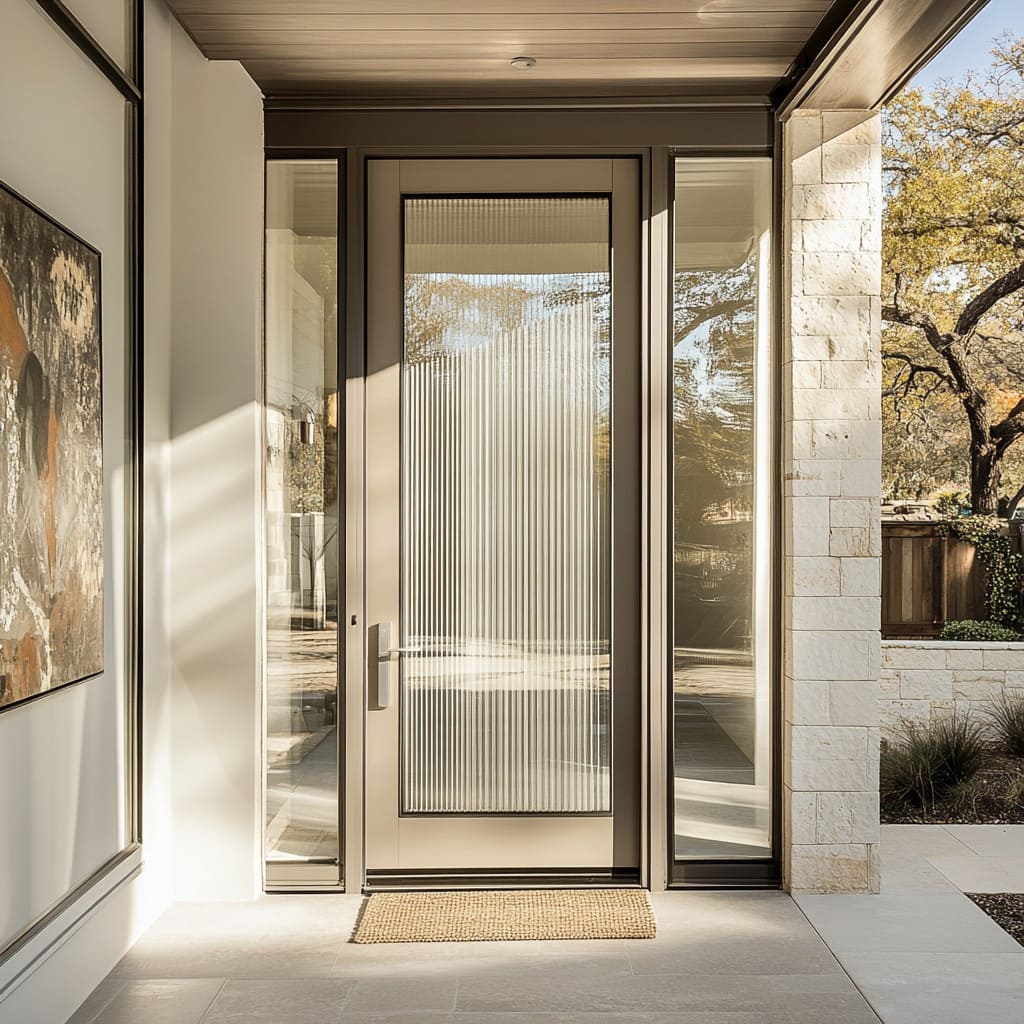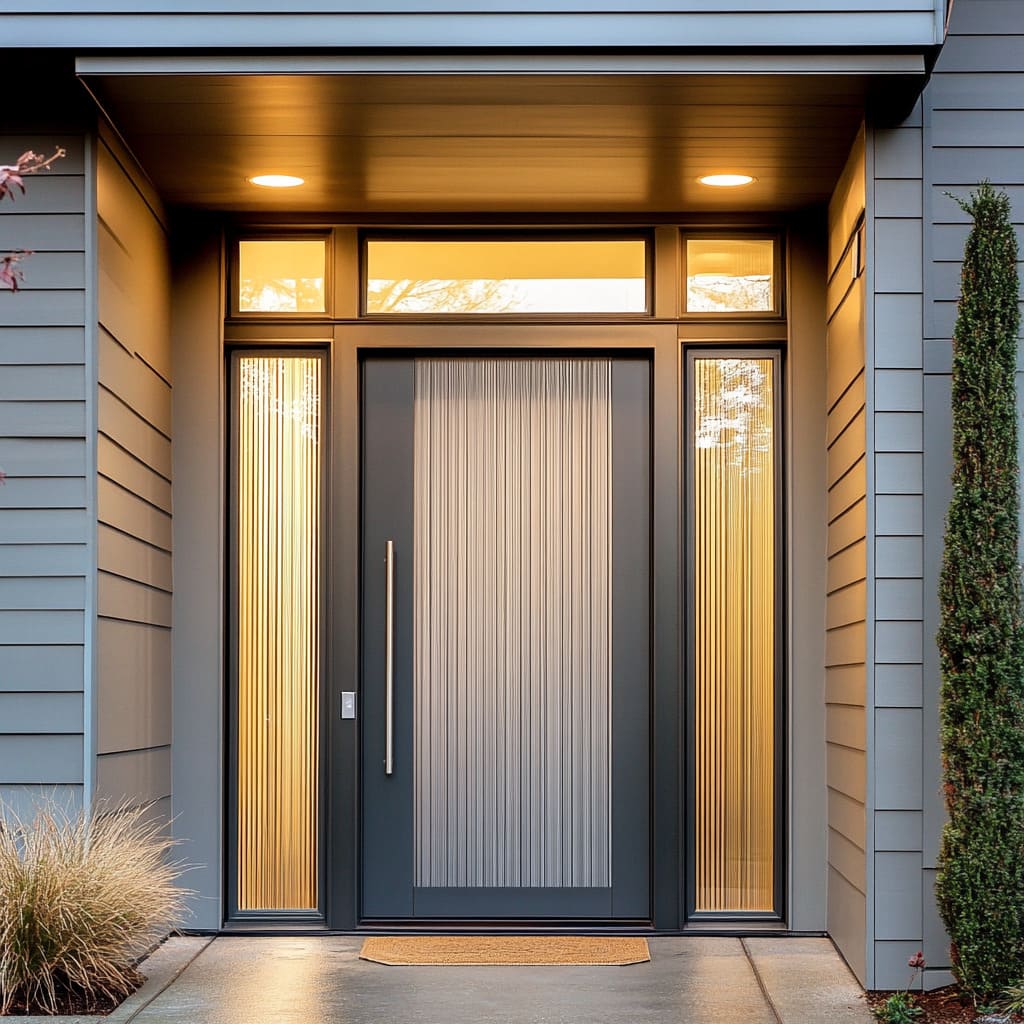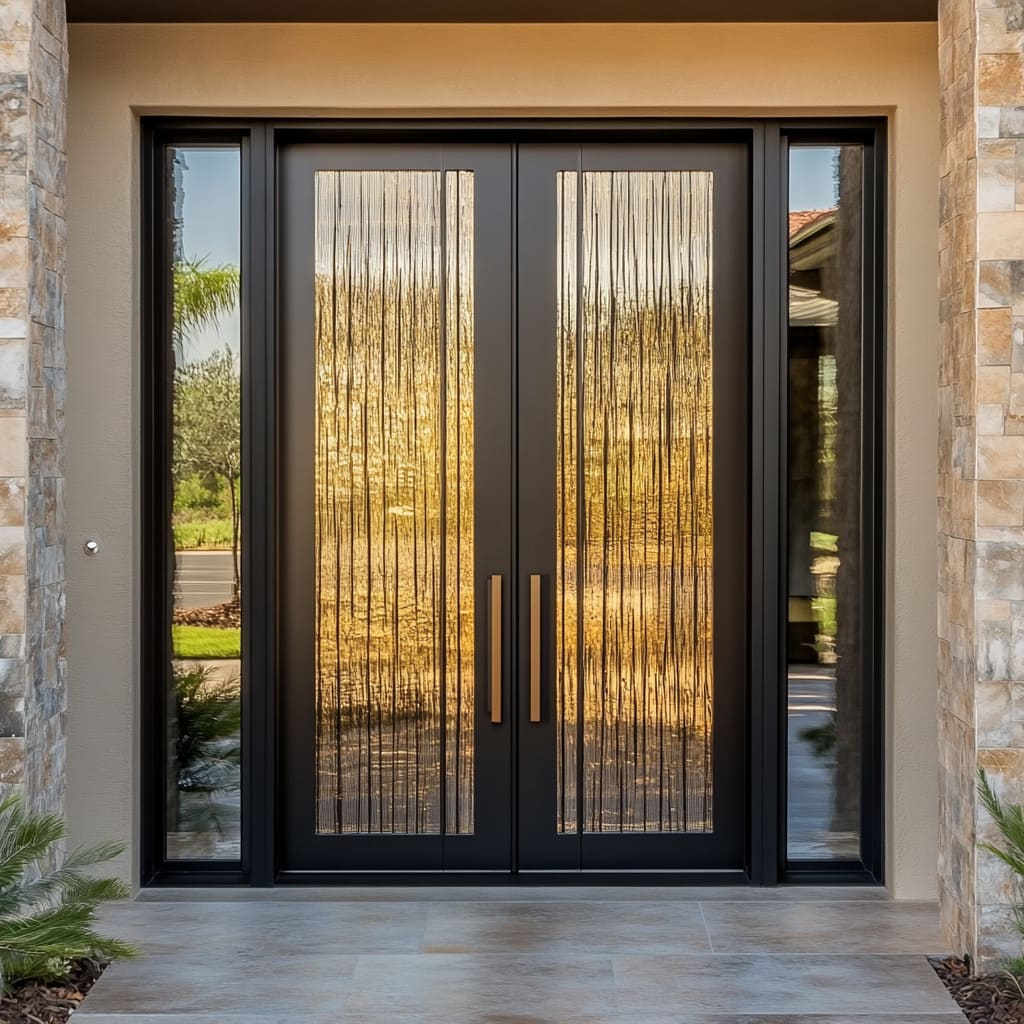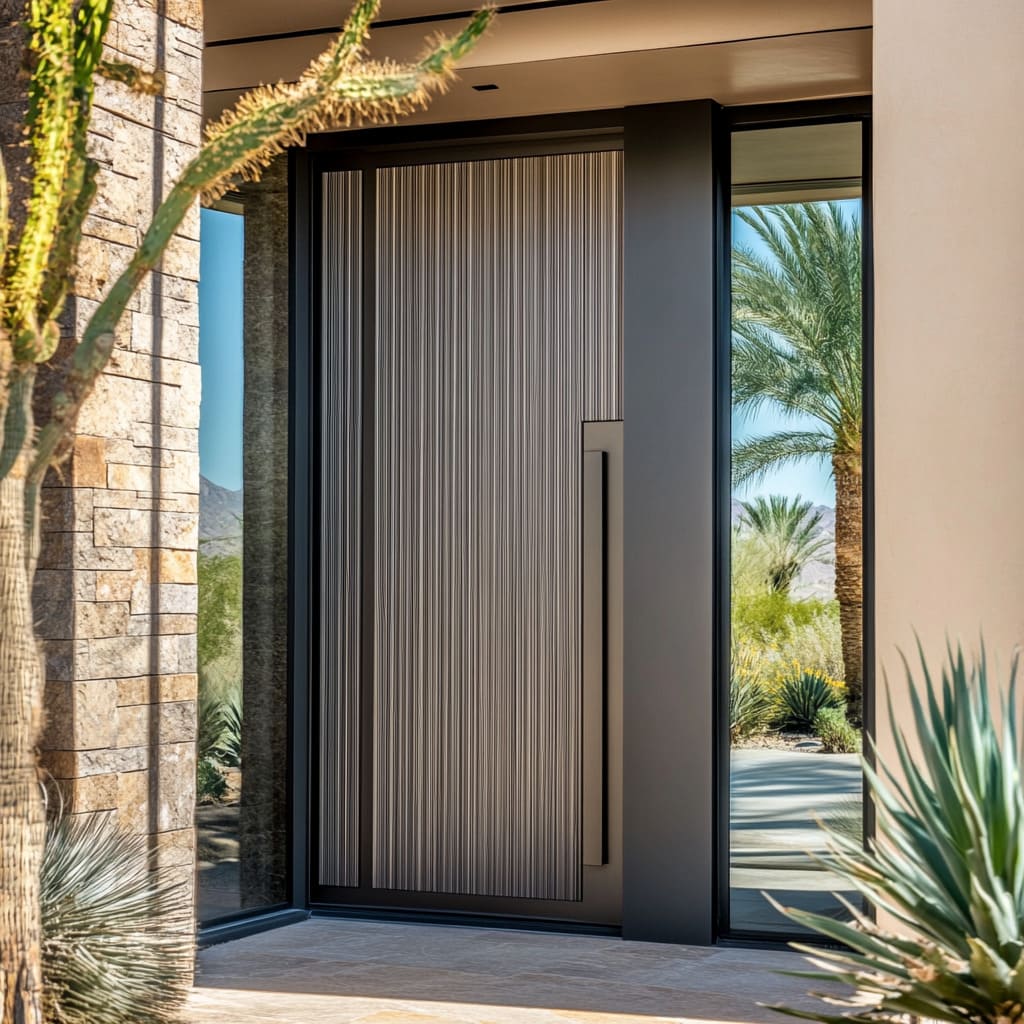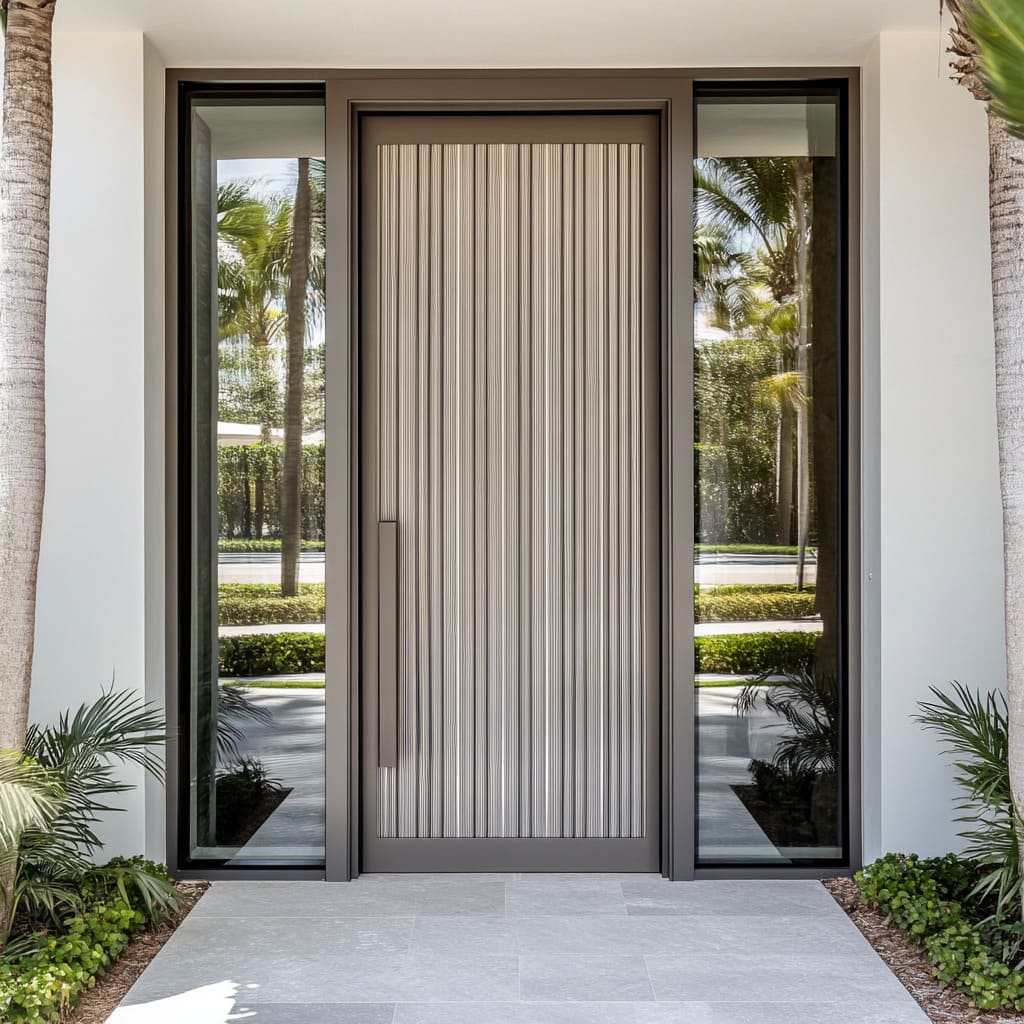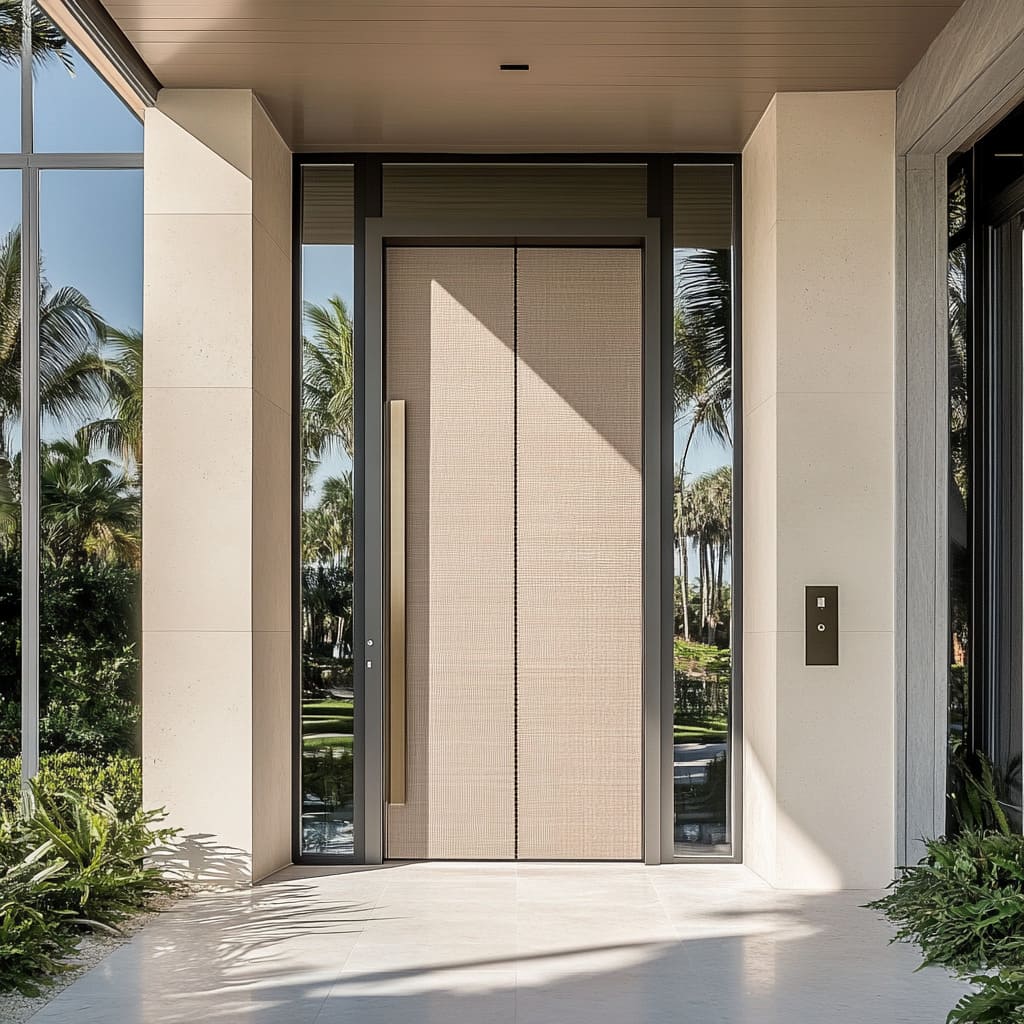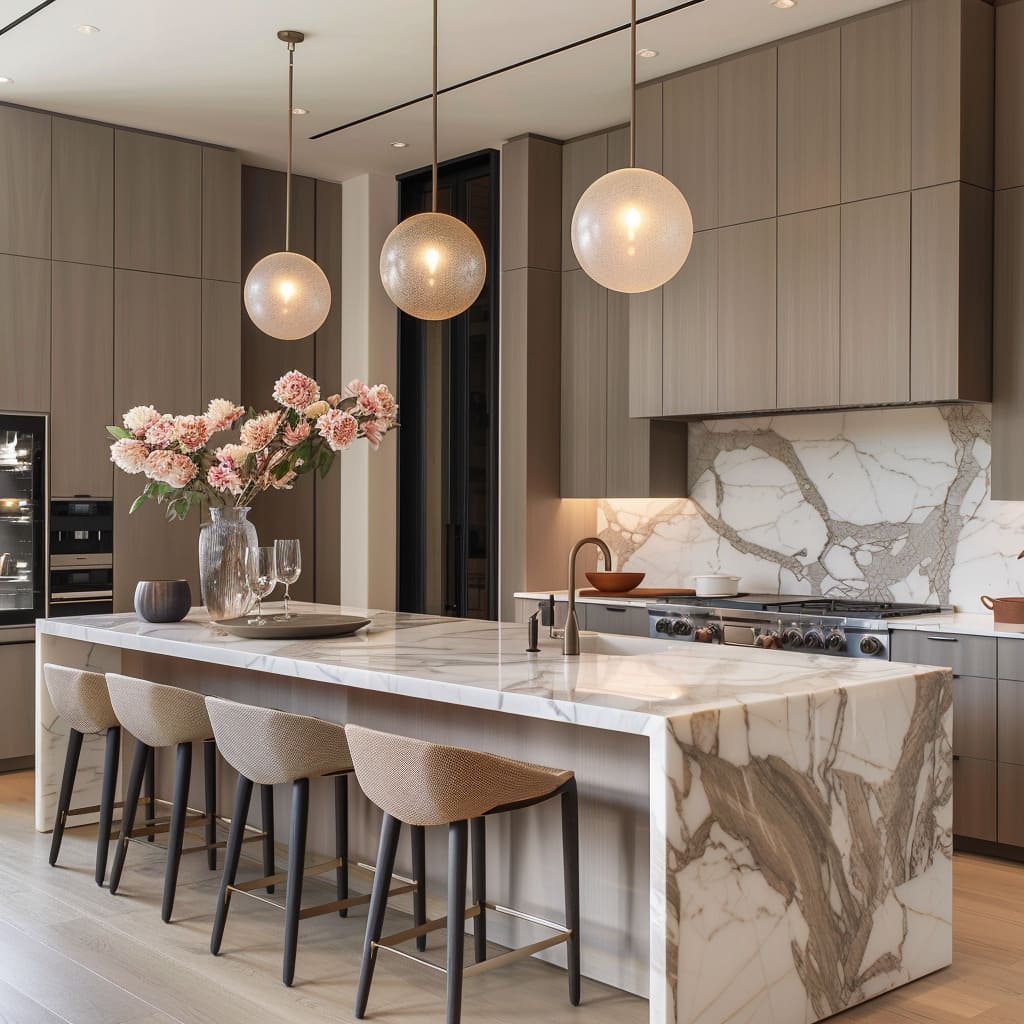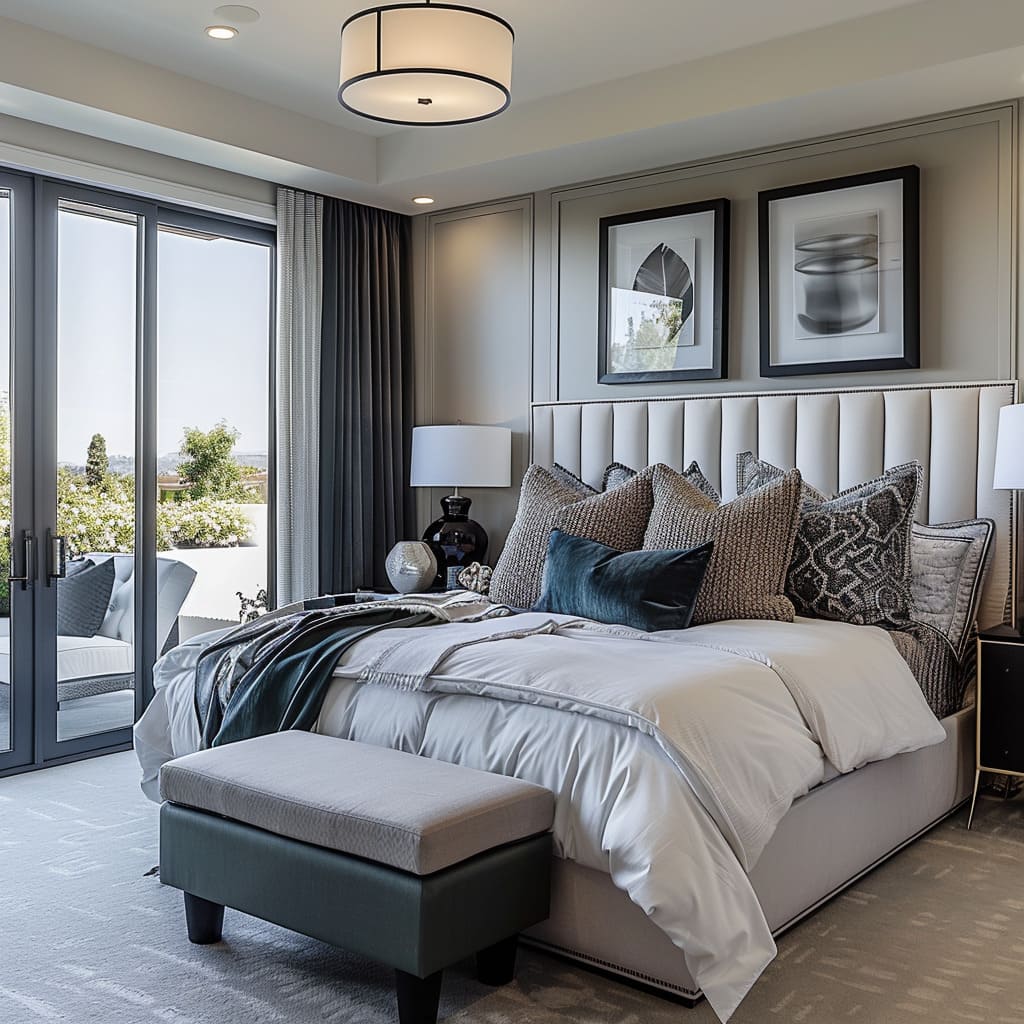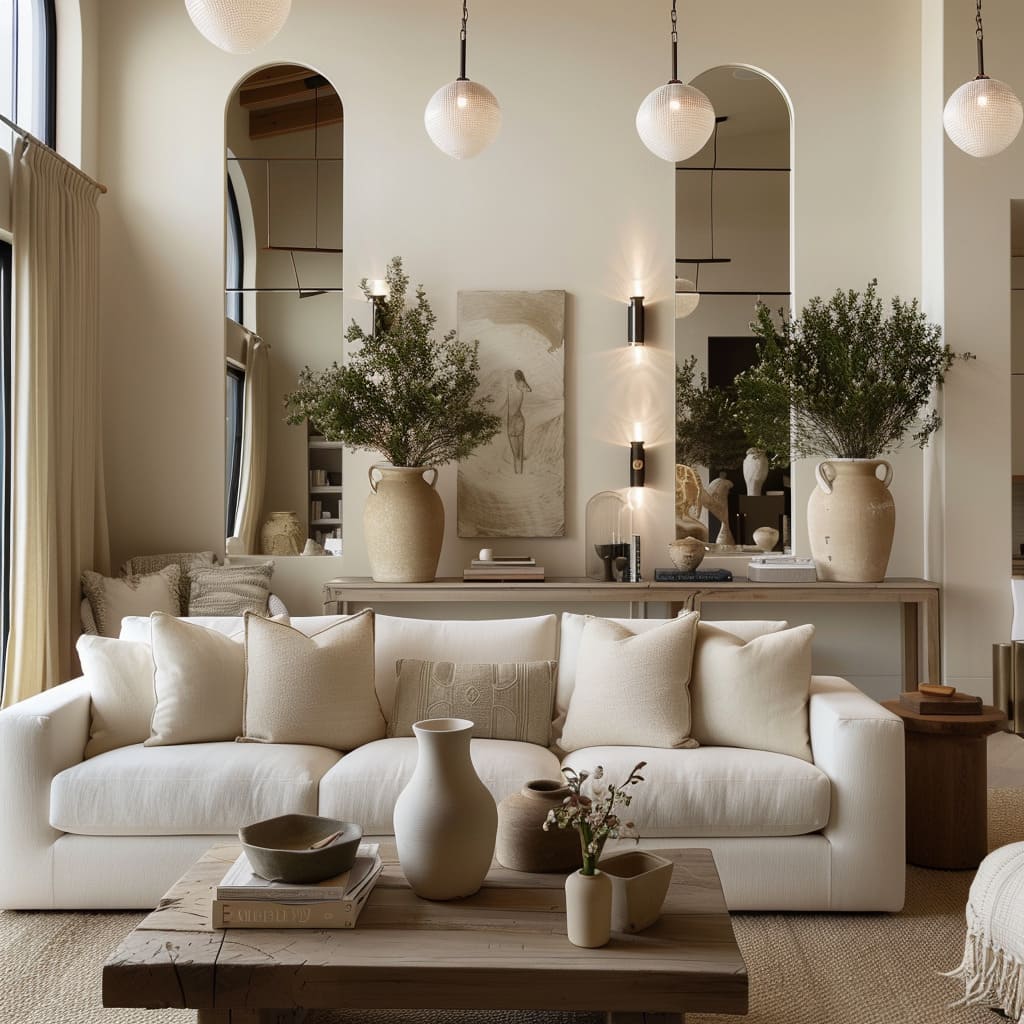Textured finishes on doors are gaining attention in modern architecture, offering a fresh approach to entryways and interior spaces. These finishes go beyond mere decoration, adding depth, tactile interest, and a unique character to doors that would otherwise remain flat and unassuming. This article explores the world of textured finishes, delving into the materials, design versatility, and functional benefits that make them a compelling choice for homeowners and designers alike
Overview of Textured Finishes
Textured finishes on doors refer to the application of materials or treatments that create a three-dimensional surface. These textures can range from subtle patterns to more pronounced designs, and they serve both aesthetic and functional purposes. Common types include ribbed glass, grooved wood, and composite surfaces that mimic natural materials.
Textured finishes have evolved over time, with a resurgence in popularity as contemporary architecture embraces elements that add interest and contrast to minimalist designs. They are particularly valued for their ability to bring an added layer of visual and tactile richness to modern homes.
How do textured finishes on doors impact the overall energy efficiency and insulation of a home, particularly in varying climates?
Textured finishes on doors can impact the overall energy efficiency and insulation of a home in several ways, depending on the materials used and the specific design of the texture. The materials used for textured finishes, such as ribbed glass, grooved wood, or composite surfaces, play a significant role in determining how well a door insulates against temperature changes. For instance, doors with composite materials often have better thermal performance compared to traditional wood doors because composites are designed to resist heat transfer.
This can be particularly beneficial in extreme climates, where maintaining a consistent indoor temperature is important.
Textured finishes may influence how heat is conducted or prevented from entering or leaving a home. Doors with multiple layers or thicker materials may provide better insulation due to reduced thermal bridging—where heat flows through materials that are poor insulators. Ribbed glass, for example, may offer some insulation benefits due to the air pockets created by the ribbing, which can slow down heat transfer. In colder climates, textured finishes on doors can add an extra layer of insulation, helping to retain warmth inside the home. In warmer climates, these textures may help reflect or diffuse sunlight, reducing heat gain.
However, the effectiveness of these features will depend on how the door is constructed and whether additional insulation measures, such as weather stripping or energy-efficient cores, are integrated into the door design.
Overall, the impact of textured finishes on energy efficiency is closely tied to the door’s overall construction and the specific environmental conditions where the door is installed. Proper installation and the use of complementary energy-saving features are also critical in maximizing the energy efficiency benefits of textured door finishes.
What are the challenges and considerations when integrating textured finishes into existing architectural styles, especially in homes with more traditional or ornate designs?
Integrating textured finishes into existing architectural styles, particularly in homes with traditional or ornate designs, presents several challenges and considerations.
These factors must be carefully managed to ensure that the new finishes complement rather than clash with the established aesthetic
Maintaining architectural integrity is one of the primary challenges. Textured finishes that are too modern or industrial might conflict with the home’s established look, disrupting the harmony of design elements. It is essential to choose textures and materials that resonate with the existing architectural language, such as using wood textures that mimic classic carvings or stone finishes that echo the historical materials of the home
Ensuring material compatibility is another important consideration. The materials used for textured finishes must be compatible with the original materials of the home. Applying a modern composite texture to a door on a Victorian-era home could look out of place if not carefully selected to match the tone and feel of the existing materials. Natural materials like wood or stone, which can be finished to blend with traditional architecture, are often more suitable choices
Achieving a balance between old and new elements is critical. Too much contrast can make the textured finish appear as an afterthought rather than a cohesive part of the design. Subtle patterns and textures that add depth without overwhelming the original style are often more successful.
Designers might integrate textures in less prominent areas, such as on secondary doors or accent panels, to introduce the texture gradually
Attention to scale and proportion is vital in traditional or ornate designs. Textured finishes must be scaled appropriately to match the size and detail of existing elements. A heavily textured door might overpower delicate window frames or intricate cornices, disrupting the visual flow of the facade. Selecting textures that reflect the scale of surrounding architectural details helps maintain a cohesive appearance
Considering the historical context and preservation is crucial for homes of historical significance. There may be restrictions on the types of modifications allowed, so textured finishes should be chosen with a deep understanding of the historical context and, if necessary, with the approval of preservation boards or historical societies. Using finishes that mimic period-appropriate materials can help in retaining the historical value of the property while allowing for modern updates
The goal of integrating textured finishes in traditional homes should be to enhance the existing design, not to compete with it. Choosing finishes that subtly highlight architectural details, such as using a textured wood finish that complements ornate woodwork, can create a harmonious blend. It is also essential to consider the overall color palette and ensure that the new finishes integrate well with the existing tones. Overall, the successful integration of textured finishes into traditional or ornate architectural styles requires a careful balance of respecting the original design while introducing new elements that can elevate the aesthetic.
Collaboration with skilled designers who understand both modern and historical styles can make this process smoother and more effective.
Materials Used in Textured Finishes
The choice of materials is crucial in achieving the desired texture and functionality. Wood is a popular choice for textured finishes, often featuring grooved patterns or carved designs that bring warmth and a natural feel to the door. These wooden textures can range from subtle grain patterns to more intricate carvings, depending on the desired effect
Glass is another material frequently used in textured door finishes. Ribbed or frosted glass adds a layer of privacy while still allowing light to pass through. This type of glass is often used in both exterior and interior doors, where maintaining a sense of openness and connection between spaces is important.
The texture of the glass also creates an interesting play of light and shadow, enhancing the door’s visual appeal.
Metal accents can be incorporated into textured finishes to add a modern or industrial touch. Brushed steel or bronze details are often used to create a sleek, contemporary look. These metals not only contribute to the door’s aesthetic but also provide durability and a sense of solidity.
Composite materials are increasingly popular for their ability to mimic natural textures while offering enhanced durability and weather resistance. These materials are often used in environments where traditional wood might not hold up as well, providing the look of natural wood without the maintenance concerns.
Aesthetic Appeal and Design Versatility
Textured finishes bring a unique aesthetic appeal to door designs, transforming them from functional elements into focal points of the home’s design. The visual impact of a textured door is significant; the play of light and shadow across the surface creates depth and interest that draws the eye. This effect can be particularly striking in minimalist or modern homes, where the texture adds a layer of complexity to otherwise simple, clean lines.
The versatility of textured finishes means they can be adapted to a wide range of architectural styles. For example, a ribbed glass panel might suit a sleek, contemporary home, while a grooved wood door could complement a more rustic or traditional setting. The ability to blend these textures with different materials and colors makes them a flexible choice for designers looking to create a cohesive yet distinctive look
Color also plays a crucial role in enhancing the effect of textured finishes. Neutral tones like taupe, grey, or soft white can enhance the subtlety of the texture, while bolder colors can make the texture a more prominent feature. The interplay between color and texture allows for a high degree of customization, enabling homeowners to create a door that truly reflects their personal style
Functional Benefits of Textured Finishes
Textured finishes offer several functional benefits that go beyond their aesthetic appeal. One of the most significant advantages is their ability to provide privacy while still allowing natural light to enter a space. Ribbed or frosted glass, for example, diffuses light while obscuring direct views, making it an ideal choice for exterior doors or interior doors where privacy is a concern
Durability is another key benefit. Textured finishes, particularly those made from composite materials or metal, are designed to withstand the elements, making them suitable for exterior applications where exposure to weather is a factor. These materials are often resistant to moisture, warping, and other forms of wear, ensuring that the door maintains its appearance and functionality over time
Energy efficiency is an increasingly important consideration in door design, and textured finishes can contribute to this in several ways. The use of insulated materials or layered textures can improve the door’s thermal performance, helping to reduce energy costs by maintaining indoor temperatures more effectively. This is particularly important in climates with extreme temperatures, where energy efficiency is a top priority for homeowners
Popular Trends in Textured Door Finishes
Textured door finishes are part of several popular design trends in 2024. One notable trend is the increased use of glass and metal combinations. Doors that feature a mix of ribbed glass and metal accents are becoming a popular choice for those seeking a modern, industrial look.
These doors often incorporate large glass panels framed by metal, creating a striking contrast that is both functional and visually appealing.
Another trend is the use of handcrafted wooden textures. These doors often feature intricate carvings or grooved patterns that showcase the natural beauty of the wood. This trend is particularly popular in homes that aim to blend modern and traditional elements, offering a warm, organic feel while maintaining a contemporary edge.
Innovative applications of textured finishes are also emerging, such as the integration of smart technology. Some doors are now being designed with textured panels that conceal smart locks or other security features, blending cutting-edge technology with traditional craftsmanship.
Case Studies and Real-Life Examples
To illustrate the impact of textured finishes, consider several real-life examples. In residential settings, textured doors have been used to create a welcoming entrance that sets the tone for the rest of the home. For instance, a home with a ribbed glass front door might enjoy the benefits of natural light flooding the entryway while maintaining a degree of privacy from the street
In commercial applications, textured finishes are often used to convey a sense of luxury and sophistication. High-end hotels, for example, might use grooved wooden doors to create a warm, inviting atmosphere that reflects the brand’s commitment to quality and detail. Designer insights can provide valuable perspectives on why textured finishes are chosen for specific projects.
Designers often cite the ability of textured finishes to add character and uniqueness to a space, making it stand out while still fitting seamlessly into the overall design scheme.
Tips for Choosing and Implementing Textured Finishes
When choosing textured finishes for doors, several factors should be considered. Material selection is key, as the chosen material will impact both the appearance and durability of the door. Homeowners should consider the climate and environment where the door will be installed, as this will influence the choice of material and finish
Installation and care are also important considerations. Textured doors may require specific installation techniques to ensure that the finish is properly aligned and secure. Additionally, understanding the maintenance requirements of different materials will help in preserving the door’s appearance over time.
For those looking to combine textures, it’s essential to ensure that the different textures complement each other without overwhelming the design. This might involve balancing a textured door with smoother surrounding elements, such as a plain wall or simple hardware, to create a cohesive look.
Future Outlook for Textured Finishes
The future of textured finishes in door design looks promising, with several trends likely to gain traction in the coming years. Sustainability is expected to play a significant role, with more designers and manufacturers focusing on eco-friendly materials and processes. This could involve the use of recycled or sustainably sourced materials that still offer the aesthetic and functional benefits of traditional textures
As consumer preferences evolve, there will likely be a greater emphasis on customization and personalization. Homeowners are increasingly looking for ways to make their spaces unique, and textured finishes offer a perfect medium for expressing individual style. The integration of technology with texture, such as smart doors with concealed features, is another area poised for growth
Conclusion
Textured finishes on doors represent a dynamic and versatile option for those looking to enhance the visual and functional appeal of their home. From the choice of materials to the implementation of innovative designs, these finishes offer a wide range of possibilities for customization and expression. As trends continue to evolve, textured doors will remain a popular choice for both residential and commercial spaces, offering a perfect blend of form and function that resonates with modern design sensibilities.


